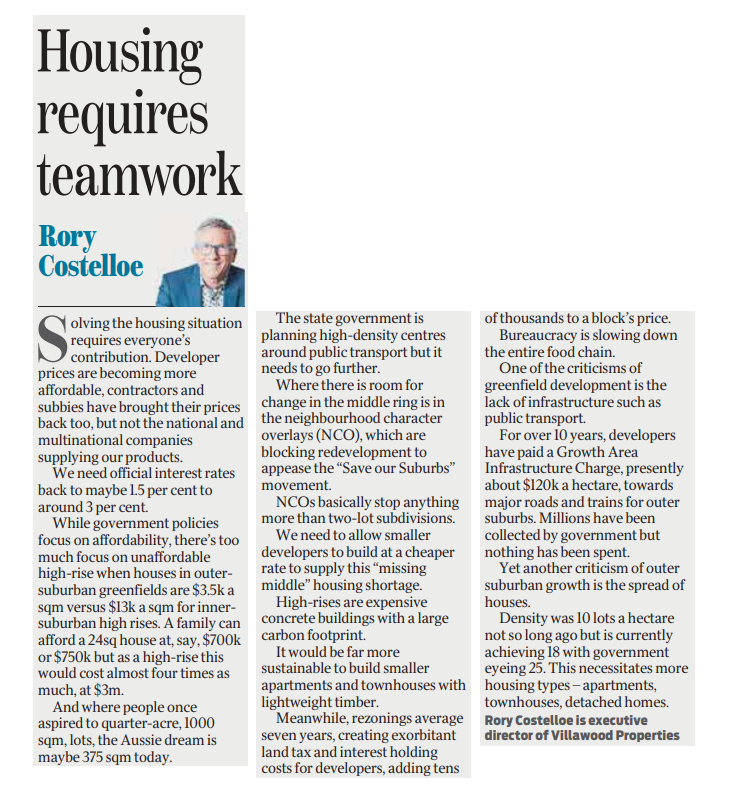Housing Requires Teamwork

Solving the housing situation requires everyone’s contribution.
Developer prices are becoming more affordable, contractors and subbies have brought their prices back too, but not the national and multinational companies supplying our products.
We need official interest rates back to maybe 1.5 per cent to around 3 per cent, something reasonable.
While government policies focus on affordability, there’s too much focus on unaffordable high-rise when houses in outer-suburban greenfields are $3.5k a sqm versus $13k a sqm for inner-suburban high rises.
A family can afford a 24sq house at, say, $700k or $750k but as a high-rise this would cost almost four times as much, $3 million.
And where people once aspired to quarter-acre, 1000sqm, lots, the Aussie dream is maybe 375sqm today.
The State government is planning high-density centres around public transport but it needs to go further.
Where there is room for change in the middle ring is in the neighbourhood character overlays (NCO) blocking redevelopment to appease the ‘Save our Suburbs’ movement.
NCOs basically stop anything more than two-lot subdivisions. They prevent small developers from doing four or six-lot projects, let alone 8, 10 or 12-pack blocks, 4 to 12-lot townhouses or small apartment blocks throughout suburban Victoria.
We need to allow smaller developers to build at a cheaper rate to supply this ‘missing middle’ housing shortage.
High-rises are expensive concrete buildings with a large carbon footprint. It would be far more sustainable to build smaller apartments and townhouses with lightweight timber.
Meanwhile, rezonings average seven years, creating exorbitant land tax and interest holding costs for developers, adding tens of thousands to a block’s price.
Bureaucracy is slowing down the entire food chain.
One of the criticisms of greenfield development is the lack of infrastructure such as public transport.
Perth has train stations finished before new estates start. South Australia is pretty good at infrastructure too and Sydney has a great train system.
Victoria’s public transport, by contrast, has lagged development.
For over 10 years, developers have paid a Growth Area Infrastructure Charge, presently about $120k a hectare, toward major roads and trains for outer suburbs.
Millions have been collected by government but nothing has been spent on transport.
Yet another criticism of outer suburban growth is the spread of houses. Density was 10 lots a hectare not so long ago but is currently achieving 18 with government eyeing 25. This necessitates more housing types – apartments, townhouses, detached homes.
Article featured in the Herald Sun February 22, 2025.